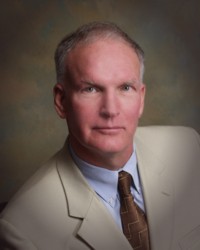Award winning Peacemaker Douglas Noll discovers brain function and peacemaking connection
While studying conflict resolution Douglas Noll discovered the scientific and neuropsychological reason negotiators fail at peace talks. "When I took modern scientific studies and transposed them onto past failed peace talks, the answers became clear. We have been using 18th century strategies in a 21st century world to resolve conflict. This led to writing Elusive Peace in the hope that diplomats, politicians and voters would use this information to become better informed and using the keys in my book shift from failure to success by employing professional mediation skills instead of outdated strategies that cause financial devastation and cost innocent lives," Noll explains.

Douglas E. Noll Professional Mediator
San Francisco, CA (PRWEB) April 30, 2012
Douglas Noll, award winning author of Elusive Peace: How Modern Diplomatic Strategies Could Better Resolve World Conflict (Prometheus, 2011) and award winning peacemaker, discovered the connection between brain function and peacemaking while studying conflict resolution strategies. This information contributed to the motivation to write his book and teach others his groundbreaking theories.
“Because we are 98 percent emotional and two percent rational, when people are in conflict, heightened emotions play a bigger role than rationality. Until people understand this, and begin to develop better skills and strategies to overcome natural tendencies to react, peace will remain elusive,” Noll explains, adding that “the problem of ongoing conflict exists in the international arena as well as between couples in relationships. Until there is understanding about brain function, people will continue to be stuck in a vicious cycle of ongoing and repeated conflict.”
While researching peacemaking Noll compared the failed peace negotiations of the past several
years and realized that the failure to create peace was due to outdated models of negotiating peace and not factoring in scientific studies that explain how the mind works in the context of conflict.
“I found that traditional military and diplomatic methods for resolving global conflicts cannot work. In Elusive Peace I show why with explanations ranging from neuropsychology to philosophy and political analysis,” Noll explains.
Noll’s body of work explains how diplomats enter negotiations with flawed assumptions about human behavior, sovereignty, and power, and shows that negotiators still use a model of European diplomacy dating back to the 18th century to solve the complex problems of the 21st century. Through numerous examples, the author shows that the key failure in current diplomatic efforts is the entrenched belief that nations, through their representatives, will act rationally to further their individual political, economic, and strategic interests. However, the contemporary scientific understanding of how people act and see their world does not support this assumption. On the contrary, research from decision-making theory, behavioral economics, social neuropsychology, and current best practices in mediation indicate that emotional and irrational factors often have as much, if not more, to do with the success or failure of a mediated solution.
“We must use professional and skilled mediators at negotiation tables around the world in areas of conflict to benefit from what we now know scientifically, and what we want to happen in peacemaking during a time when conflict worldwide is at an all time high and the threat of weaponry use is increasing,” Noll warns. For interview contact dianeden(at)centurytel(dot)net.
About Douglas Noll
Douglas Noll is the winner of the International Peace and Justice Book Award for Elusive Peace: How Modern Diplomatic Strategies Could Better Resolve World Conflicts. Doug is the 2012 winner of the CLAY award for co-founding the pro bono project Prison of Peace. Doug is a keynote speaker and sought after leader in the field of international, domestic and business conflicts.
http://www.facebook/DouglasNoll.com
Doug is a founding board member of Mediators Beyond Borders, and the 2012 President of the California Dispute Resolution Council.
Noll is a Fellow of the International Academy of Mediators, a Distinguished Fellow of the American College of Civil Trial Mediators, a Diplomat of the California and National Academy of Distinguished Neutrals, a core faculty member of the American Institute of Mediation, and on the American Arbitration Association panel of mediators and arbitrators. Mr. Noll was one of the first U.S. mediators certified under the international mediator standards established by the International Mediation Institute. Doug is the author of Elusive Peace: How Modern Diplomatic Strategies Could Better Resolve World Conflicts (Prometheus, 2011), winner of the international peace and justice book award. Doug Noll is a core faculty member of the American Institute of Mediation, a preeminent mediation Training Institute founded by Lee Jay Berman. http://americaninstituteofmediation.com



